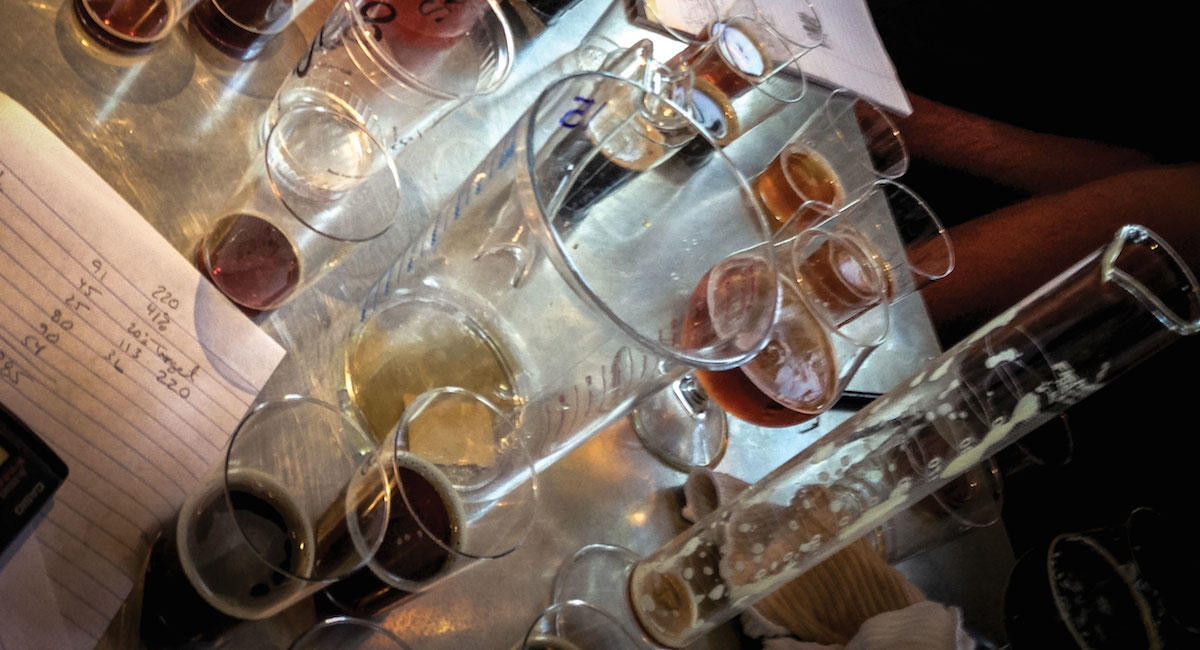In late summer, just before the fall harvest season, a panel of winemakers from California’s Central Coast region convenes at Firestone Walker Brewing Co. in Paso Robles for an epic blending session. It’s a coveted gig that brings together some of the most educated palates in the business to help sort through dozens of barrel-aged beers from Firestone Walker’s cellar and settle on an ideal blend for its annual anniversary release.
The dozen winemakers are split into teams of two, given pencil and paper, tasting glasses, and 100-milliliter graduated cylinders, then set loose with samples of a multitude of barrel-aged, high-gravity beers that span a gamut of styles—from all manner of stouts and barleywines to brown ales, pale ales, India Pale Ales, and anything else that the brewery has stashed away in its cellar. Before long, the tasting tables are littered with plastic cups as the winemakers pour, swirl, and sip their way through the beers—isolating elements in each and blending toward a finished flavor profile that, ideally, is synergistically greater than the sum of its parts.

Once each team lands on its ideal blend, Firestone Walker’s brewers mix together larger batches of each and set out flights for a blind tasting. The panelists taste each beer, vote on their favorites, and the winning blend is scaled up—a process that often involves at least seven different beers and hundreds of barrels—packaged and released as that year’s anniversary ale.

